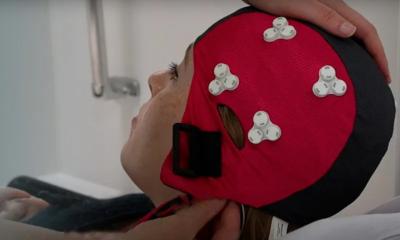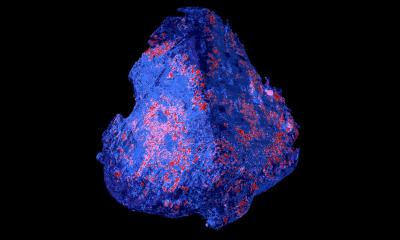Defibrillator in space
Medicine is not earthly anymore. The first defibrillator has reached the International Space Station (ISS). LIFEPAK 1000 developed by Physio-Control of Redmond will be available for NASA crew members in case of a sudden cardiac arrest in space.

Automated external defibrillator (AED) are easy to use devices that automatically interpret a patient's heart rhythm and, if necessary, deliver a potentially lifesaving defibrillation shock. They have become common in places such as airplanes, health clubs, and schools and now also in space.
The ISS has utilized manual defibrillators in the past, but NASA decided to now deploy an AED because it requires less training and maintenance, better enabling astronauts to respond to a medical emergency. The small size and light weight of the 1000 also helped minimize hardware mass and volume onboard the Space Station.
NASA conducted extensive evaluations of 18 AEDs available worldwide before selecting the LIFEPAK 1000 defibrillator to protect the crew members of the ISS. The AED evaluations focused on user interface, ease of use, durability and detailed technical specifications related to the unique conditions encountered in space, including electromagnetic interference, pressure susceptibility, temperature, vibration, acceleration and other environmental factors. Additionally, Medical Operations personnel evaluated the use of LIFEPAK 1000 in zero gravity conditions aboard a NASA DC-9 test aircraft as part of developing their advanced life support use protocols.
With the exception of a customized battery developed and provided by Micro Power Electronics, a leading manufacturer of custom batteries and power systems, and a NASA-created cover for the device that is specifically designed for space use to help protect it from electromagnetic interference, the LIFEPAK 1000 was deployed on board the Space Station in the same device configuration used by professional emergency responders.
"We are honored NASA selected the LIFEPAK 1000 defibrillator to protect the lives of crew members onboard the International Space Station," said Brian Webster, president of Physio-Control. "The 1000 is used by thousands of emergency responders worldwide and was designed for use in the harshest environments and situations; it's proven to be one of the most reliable products Physio-Control has ever developed. This 'space first' is especially exciting for us, as it underscores the many reasons customers choose LIFEPAK defibrillators for emergency medical use."
About Sudden Cardiac Arrest and the LIFEPAK 1000 Defibrillator
Sudden cardiac arrest happens suddenly and without warning, and is commonly caused by an electrical disturbance in the heart that causes an individual to go into an abnormal heart rhythm known as ventricular fibrillation, losing a pulse and consciousness. Immediate CPR and defibrillation are critical to survival, as survival rates drop about 10 percent every minute without defibrillation.
Available from Physio-Control since 2006, the LIFEPAK 1000 defibrillator is an AED created for use by basic life support responders to treat cardiac arrest patients. The 1000can also be programmed so those with more advanced training can view the three-lead ECG onscreen to provide continuous cardiac monitoring. The 1000 provides escalating biphasic energy up to 360 joules.
About the International Space Station
The International Space Station is a state-of-the-art, orbiting laboratory complex that travels 240 miles above the Earth. Assembly began in 1998 and work on the complex continues today. The first resident crew established the beginning of a continual human presence in space and arrived in a Russian capsule as part of Expedition 1 in November 2000. Since then, astronauts from more than 10 countries have carried out 17 missions. Crew members currently have interior living and working space for conducting ongoing medical and space research with the goal of improving the lives of people all over the world.
About NASA
Congress created NASA in 1958. Its mission is to pioneer the future in space exploration, scientific discovery and aeronautics research. Led by Michael Griffin, the agency is headquartered in Washington, D.C., with 10 field centers and other facilities around the nation.
This article is adapted from the original press release.
29.08.2008










